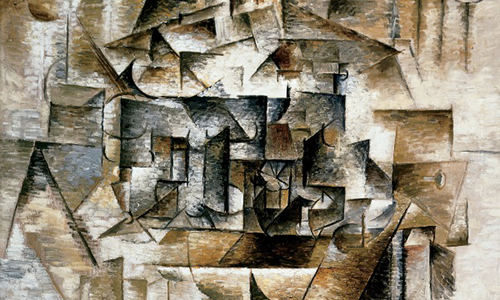Filling in Gaps in our Permanent Collection Records
The history of ownership, or provenance, of a work of art represents one aspect of a complete catalogue record for any object entering a museum’s permanent collection.
In general, provenance research assists in the evaluation of the history of taste and the study of collecting practices throughout the centuries. Ideally the provenance documents an object’s whereabouts from its maker to its present day owner, including all former owners, locations, and sale transactions. However, it is quite common for an object’s provenance to have gaps, or periods of time where the provenance information is not known. Lack of information can result from any number of reasons; for example, a previous owner may have desired to be anonymous, or records were never kept.
Please feel free to contact us at [email protected], should you have any questions or comments. We hope that the public and other scholars will assist us with this research by providing other documentation pertaining to the history of these works of art. Visit the Mary R. Schiff Library & Archives page for hours and additional information.
Provenance Research Guidelines & Criteria
During the years 1933-1945, the Nazis conducted the largest confiscation of cultural property known in history. Although many works were restored, or restituted, to their original owners after World War II, many works entered the art market and eventually new collections.
Recently, museums have placed an emphasis on researching the provenance of their objects acquired during the years just before and during World War II to ensure that they do not house works that were looted by the Nazis and not subsequently restituted to original previous owners, their heirs, or the country from which they were taken. In 1999, the American Association of Museums issued their Guidelines Concerning the Unlawful Appropriation of Objects during the Nazi-Era. Amended in 2001, these guidelines require museums to review the provenance of works of art in their collection that may have been looted during the Nazi/World War II era, specifically European paintings and objects of Judaica made before 1946 and acquired after 1932 that could have been in Europe during those years and/or experienced a change in ownership during that time.
Criteria & Selection
In conjunction with these guidelines, the Cincinnati Art Museum began a critical review of the provenance of its European paintings.
The Cincinnati Art Museum has 243 European paintings in its collection that were created before 1946 and acquired after 1932. Of these, 143 have been identified as having an incomplete provenance between 1932 and 1946. An additional 6 paintings have fully documented ownership histories during the Nazi-era, but underwent a change of ownership in continental Europe during that time.
The research presented here includes detailed provenance entries on these 149 European paintings. The inclusion of a painting on the following list does not signify that it was subject to Nazi looting; it merely identifies it as a work of art with a gap in its history of ownership between 1932 and 1946, or which underwent a change of ownership in continental Europe during those years.
The Cincinnati Art Museum’s curatorial staff is dedicated to this project and is in the process of reviewing all existing documents pertaining to the history of ownership of these works in the museum’s curatorial files, collector files, library, and archives. Outside archival resources, libraries, and the Internet, are also being utilized in this effort.
Please note that provenance research is a long, time-consuming process, and the entries presented here will be updated as new information becomes available.
Explore Nazi-era Provenance Research
Provenance Research Resources
Standards Regarding the Unlawful Appropriation of Objects During the Nazi Era
The American Alliance of Museums
Report of the Association of Art Museum Directors Task Force on the Spoliation of Art During the Nazi World War II (1933-1945)
The Association of Art Museum Directors
Lost Art Internet Database
The German government's list of more than 2,200 looted artworks.
The Documentation Project
Project for the Documentation of Wartime Cultural Losses
The National Archives and Records Administration of the United States
The Presidential Advisory Commission on Holocaust Assets in the United States
Akinsha, Konstantin and Grigorii Kozlov. Beautiful Loot: The Soviet Plunder of Europe's Art Treasures. New York: Random House, 1995.
Barron, Stephanie. "Degenerate Art": The Fate of the Avant-Garde in Nazi Germany. exh. cat. Los Angeles: Los Angeles County Museum of Art, 1991.
Farmer, Walter I. The Safekeepers: A Memoir of the Arts at the End of World War II. Berlin: Walter de Gruyter, 2000.
Feliciano, Hector. The Lost Museum: The Nazi Conspiracy to Steal the World's Greatest Works of Art. New York: Basic Books, 1997.
Kurtz, Michael J. Nazi Contraband: American Policy on the Return of European Cultural Treasures, 1945-1955. New York: Garland, 1985.
Nicholas, Lynn H. The Rape of Europa: The Fate of Europe's Treasures in the Third Reich and the Second World War. New York: Alfred A. Knopf, 1994.
Petropoulos, Jonathan. Art as Politics in the Third Reich. Chapel Hill: University of North Carolina Press, 1996.
Petropoulos, Jonathan. The Faustian Bargain: The Art World in Nazi Germany. New York: Oxford University Press, 2000.
Simpson, Elizabeth, ed. The Spoils of War: World War II and Its Aftermath. The Loss, Reappearance, and Recovery of Cultural Property. New York: Harry N. Abrams, 1997.
Trienens, Howard J. Landscape with Smokestacks: The Case of the Allegedly Plundered Degas. Evanstan, IL: Northwestern University Press, 2000.
Yeide, Nancy H., Konstantin Akinsha, and Amy L. Walsh. The AAM Guide to Provenance Research. Washington: American Association of Museums, 2001.


 Explore the Permanent Collection
Explore the Permanent Collection
 Mary R. Schiff Library & Archives
Mary R. Schiff Library & Archives




